A similar version has previously been published in Caves & Karst Science, Vol.51, No.3 (2024) pp.129-133. Transactions of the British Cave Research Association.
Abstract
During 2024 excavations in the area known as ‘Can of Worms’ in Hallowe’en Rift, an interesting sediment deposit was exposed and later sampled. A sub-sample was washed to remove the silt and clay fractions and revealed an abundance of ferro-manganese spherules. On closer examination, the spherules exhibited a concentric layered internal structure with several having a central, angular mineral grain around which the layers were formed, analogous to the growth of pearls in oysters or the formation of ooids, which are a type of carbonate or iron-coated grain, commonly with a cortex of fine laminae lacking biogenic features, and with a nucleus, such as a shell fragment or sand grain. Permafrost conditions on Mendip during the Pleistocene Epoch are thought to have penetrated to significant depth, with subsequent periods of thaw reaching lesser depths resulting in a deep impervious ice plug causing meltwater to be trapped and ‘ponded’. The ponded meltwater was ‘topped up’ by the ingress of surface-derived water, probably reflecting seasonal changes. The rise and fall of water created currents within the flooded cave, leading to agitation of particles and precipitation of minerals that coated particulates by a process analogous to that which creates ooids. The ‘pulsing’ of water also led to the deposition of rhythmites, which are observed in sediments throughout the cave.
Introduction
Hallowe’en Rift, at British National Grid coordinates ST 5353 4811 and altitude 148m above Ordnance Datum (aOD), has a current surveyed length exceeding 300m, with a vertical range of about 25m. The cave is located in a wooded hillside northeast of Wookey Hole Cave (Mendip Hills, Somerset). Initial excavation of the cave began in 1982, when the current access route was blasted open, but by the end of the 1980s interest at the site had waned. In the early-1990s, activity at the cave re-commenced briefly before other projects and interests took precedence. The current phase of activity began in 2009, and the exploration and investigation of the increasingly complex cave is ongoing (2024); several potential leads are actively being pursued.
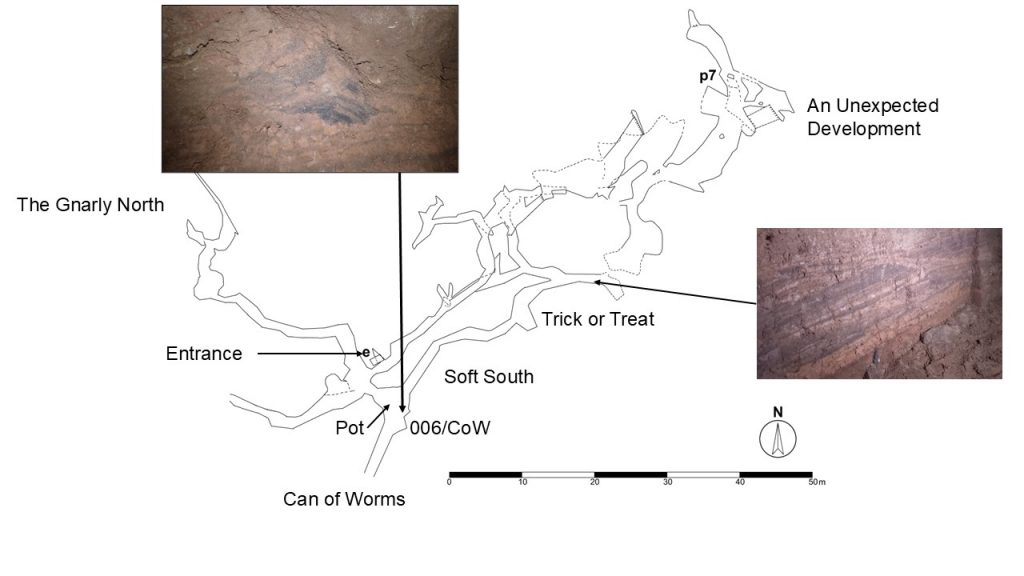
Figure 1. Hallowe’en Rift survey. BCRA 5c by D. Price, R. Taviner and V. Simmonds
The ‘upper’ cave passages consist mostly of low passages leading to the more spacious area of An Unexpected Development (Fig.1). The ‘lower’ sections of passage, known as the Soft South, are more generally walking- to stooping-sized with several good exposures of sediment deposits. The cave passages are all formed within strata deposited during the Triassic Period, 251.9 to 201.3 million years ago. Most of the now accessible passages were completely or partially filled with deposits of sandy silt/clay, containing many scattered cobbles and boulders of dolomitic conglomerate and common clasts of fragmented speleothems, including broken stalagmite, stalactite, and flowstone; in places there is also evidence for bioturbation, in the form of root disturbance. U-series dates of speleothems range from c. 500 thousand years (ka) to 50 ka, indicating that the cave passages were open to some extent during that time. Sediment deposition within the cave passages occurred mostly late in the Pleistocene Epoch and in the Holocene Epoch. Most of the known passages have been made accessible by excavation. Recently discovered sections of open cave passage were found to contain abundant shattered speleothems and a variety of interesting geomorphological features relating to frost/ice damage within the cave (Simmonds, 2019). Currently, work continues to follow a large sediment-filled fossil passage trending towards northeast-to-east, leading from the base of a c. 3m deep pot, where a connection to Trick or Treat has been achieved and access to passages beyond is currently being pursued.
Sediments
During 2024, a change of circumstances prompted a review of the digging strategy and the development of an ‘alternative’ dig (now known as ‘Can of Worms’) leading approximately south-westwards from the ledge at the top of the pot in the Soft South. During digging activities, an interesting-looking sediment deposit was exposed (Fig.1). A bulk sample (about 1kg) was taken on 03/02/2024, from which a sub-sample weighing c.200g was later washed over a set of nested test sieves (2mm, 0.6mm, 0.063 mm), removing the silt/clay fraction and retaining the sand- and gravel-size particles (Fig.2 and Plate 1). Visibly evident in the residue was an abundance of iron/manganese (Fe/Mn) spherules. Most of the spherules were coarse-sand size (passing 2mm mesh, retained 0.6mm mesh) with a smaller quantity classified as granule-size (passing 6.3mm mesh, retained 2mm mesh).
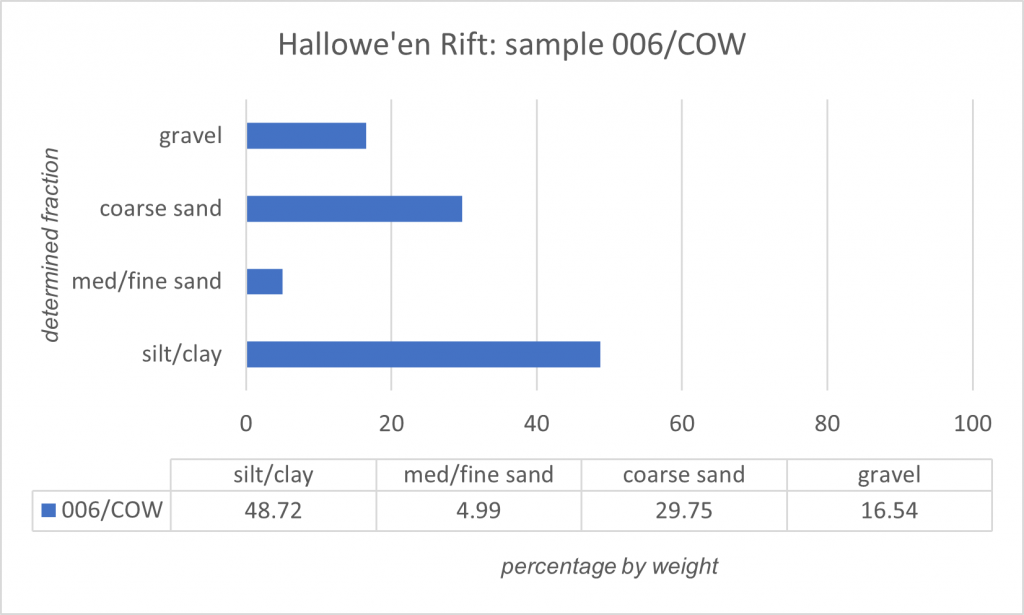
Figure 2. Particle-size analysis, sample 006/COW (test sieve sizes: 2mm, 600-microns, 63-microns)
The presence of these Fe/Mn spherules had previously been noted in other sediment samples taken in Hallowe’en Rift although not in such high concentrations.
To investigate their mode of formation, a representative selection of spherules was set in a small block of epoxy resin and polished down to determine their internal structure. The resulting polished epoxy block revealed that most of the spherules examined had a concentrically layered internal structure. Several of the spherules also contained a central, angular, mineral grain around which the layers had formed, in a manner analogous to the growth of ‘pearls in oysters’ or the formation of ooids. Broadly in the current context, ooids are a type of carbonate or iron-coated grain with a cortex of fine laminae, lacking biogenic features, with a nucleus, most commonly comprising a shell fragment or a sand grain (Kearey, 2001). The term ‘pisoid’ (or ‘pisolith’) might also be used, because structurally they are similar to ooids, but pisoid is generally, applied to larger sizes (≥ 2mm in diameter), whereas ooids are normally considered as ≤ 2mm (Kalinina et al., 2024).
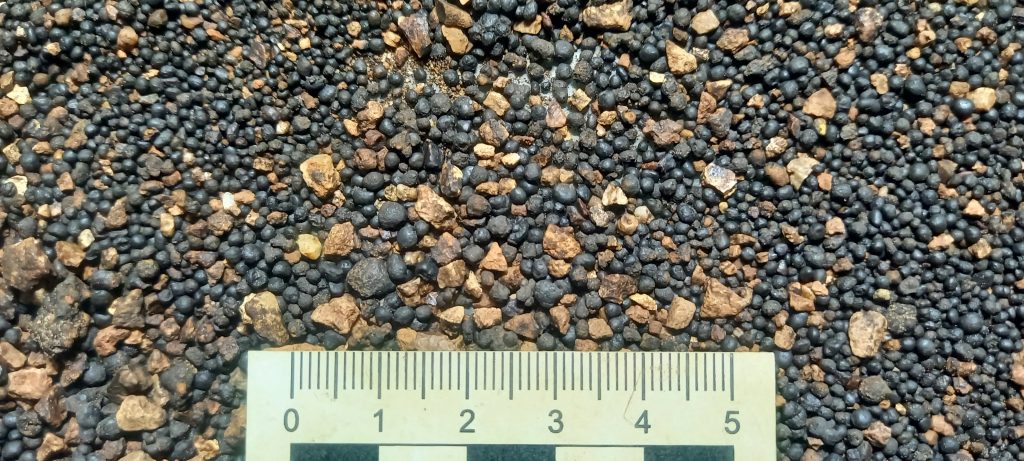
Plate 1. Sample: 006/COW, washed over 63-micron test sieve (ungraded). Abundant iron/manganese spherules are clearly evident ranging from sand- to fine gravel-size
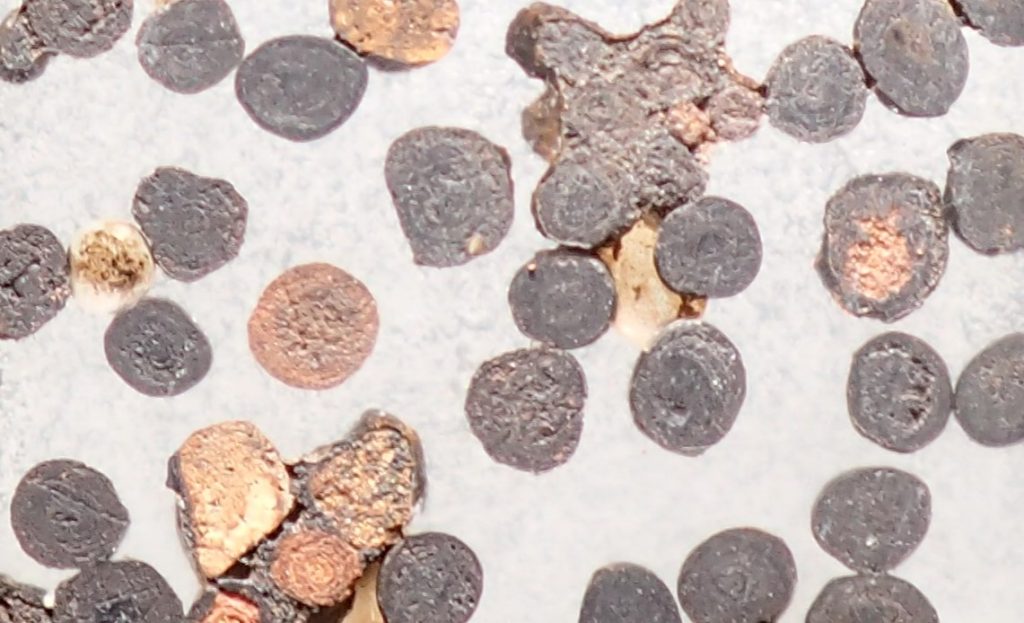
Initially, it was thought that these spherules had been accumulated through turbulent eddies during multiple flood events occurring throughout the Pleistocene, the denser sand- and gravel-sized Fe/Mn particles being deposited as pockets or lenses. Subsequently, as energy and turbulence dissipated, the interstices between the coarse-grained particles becoming filled by silt and clay transported by water movement through the sediments over an undetermined period. However, it is now thought more likely that the laminated coarse- to fine-sediments (fining upwards) deposited in Hallowe’en Rift are a result of freeze/thaw ponding causing water to ‘pulse’ through the cave in a cyclical process (Bull, 1980).
Rhythmites are finely laminated sediments in which two or three different lithologies are regularly repeated, they are common features of glacial lakes (Kearey, 2001). Permafrost conditions on Mendip during glacial periods throughout the Pleistocene period might have reached depths of ~80–100m, resulting in the blocking of Hallowe’en Rift (and other caves) by ice plugs. During warmer interglacials and interstadials, thawing might occur to a lesser depth, perhaps ~50m. Effectively the cave would still be ‘plugged’ by deeper ice, causing meltwater outflow and ‘ponding’ (Simmonds, 2019). The ponded meltwater ‘topped up’ with the ingress of surface-derived water, probably reflecting seasonal changes. The rise and fall of water creating currents within the flooded cave allowing for agitation of particles and the precipitation of minerals coating particulates in the same process that creates ooids. Precipitation is dependent upon the concentration of ions in solution and factors such as temperature and pressure. Water with high oxygen saturation is favourable for the formation and precipitation of ooids (Kalinina et al., 2024). Precipitation can occur when the temperature of the solution falls, when solute evaporates, or with changing chemical conditions in the solution. Saturation is the point at which a solvent can hold no more solute. Observations in Hallowe’en Rift confirm that ongoing ingress of water through surface soils into the cave readily precipitates carbonate, and that only short time-scales are required for this to occur. Water presently encountered in the cave originates via percolation, there are no sinking streams.
Cave sediments can be divided into two broad categories: clastic sediments and chemical sediments. Clastic sediments are moved mechanically whereas chemical sediments are formed in place, precipitated from solution in seeping, dripping, or flowing water. Clastic sediments can be further subdivided into materials that are derived locally within the cave (autochthonous) and those that are transported into the cave from the surface (allochthonous). Chemical sediments are subdivided into categories based upon their composition (White, 2007), including travertines, evaporites, phosphates, resistates, and ice. In the case of the Hallowe’en Rift spherules, clastic sediments provide the nucleus around which chemical sediments precipitate. Iron (Fe) and manganese (Mn) are commonly found in cave environments, especially as oxides and hydroxides. Their presence is generally indicated by characteristic colours, including reddish-brown, orange, and yellow in the case of iron, and dark brown to black in the case of manganese (Kotula et al., 2019). These compounds are essentially insoluble in neutral pH water and so are known as resistates (White, 2007), i.e. they are minerals that are resistant to chemical weathering. Black coatings that commonly occur to cover stream sediments are usually described as manganese oxide. These oxides appear as thin (<1 mm) coatings although thicker and more massive deposits are known to occur (White, 2007). In general, the clastic sediments found within Hallowe’en Rift comprise variably red to red-brown silt/clay abundantly layered with variably grey to grey-black silty sand containing many subangular or subrounded cobbles and boulders of the locally occurring (Triassic) Dolomitic Conglomerate and of calcite flowstone and fractured stalagmites and stalactites. There are also less extensive deposits of yellow and greenish-yellow, slightly silty, sand, though this layer generally lies towards the base of sediment sequences in the deeper sections of the cave, in some cases underlying a degrading calcite layer.
Chemical Analyses
The local host rock mostly comprises part of the Triassic Dolomitic Conglomerate. Most of the clasts within the conglomerate bedrock are of Carboniferous limestones and less commonly Devonian ‘Old Red Sandstone’; the rock clasts are also interspersed with various minerals. Weathering of the local bedrock releases iron, manganese, and other trace elements to be transported throughout the cave by water. Generally, any ‘metals’ released into caves from bedrock or allochthonous sediments appear as oxides and/or hydroxides. The mineralogy of Fe and Mn compounds in caves is also affected by the microclimatic conditions of the cave environment (especially humidity), which govern the hydration or dehydration of compounds. A wide variety of Fe and Mn compounds can be observed in caves developed in carbonate rocks, because these rocks and their weathering products are commonly enriched in minerals that contain Fe and Mn, including pyrite, hematite, rhodochrosite, marcasite, limonite, and goethite. Many fissures and caverns in karst limestones are filled or partially filled with red masses of iron oxides. For this reason, soils formed on limestone under some climatic conditions exhibit a characteristic red colour (Kotula et al. 2019). Fe and Mn compounds are sensitive to changes in pH and Eh (oxidation/reduction) of water environments and oxidize when geochemical conditions change from anaerobic to aerobic, resulting in precipitation of minerals (Kotula et al, 2019).
| Sample | As | Ba | Fe | Mg | Mn | Zn | pH | Carb. | SOM |
| (Samples = mg/kg, except pH = units; carbonate (Carb.) and soil organic matter (SOM) = %) | |||||||||
| Surface | 42 | 179 | 36500 | 3925 | 3147 | 487 | 6.4 | 3.8 | 0.9 |
| Red/brown | 47 | 160 | 43400 | 4468 | 1988 | 810 | 7.3 | 14.3 | 0.8 |
| grey | 54 | 361 | 52130 | 4724 | 7944 | 384 | 7.3 | 1.8 | 1.2 |
Note: for the purposes of comparison between Tables 1 and 2, 1 ppm = 1 mg/kg
The samples presented in Table 1 were taken at the surface to provide background data, and underground from successive layers about 5m east of the base of the cave entrance, in the south bank of the approach passage. It is noted that the analysis was limited to three samples.
| Sample | As | Ba | Fe | Mg | Mn | Zn | Ca | Pb | Si |
| (all samples = PPM – parts per million) | |||||||||
| 1 | <LOD | 823 | 57004 | 10474 | 24710 | 387 | 3151 | 6352 | 37255 |
| 2 | <LOD | 324 | 13578 | 31275 | 10623 | 306 | 257 | 2342 | 30686 |
| 3 | <LOD | 1134 | 43118 | 7928 | 48279 | 543 | 4680 | 9132 | 31427 |
| 4 | <LOD | 1193 | 73518 | 8324 | 34602 | 514 | 3854 | 9251 | 29849 |
The results for portable hand-held X-ray fluorescence (XRF) analysis of the ferro-manganese spherules sampled are presented in Table 2, showing a representative selection of elements allowing for comparison with the elements analysed and the results presented in Table 1. Underground, a mean soil pH of 5.1 was recorded for the fine-grained sediments in-situ at the sampling location (006/CoW) in Can of Worms.
X-ray diffraction analysis
X-ray diffraction (XRD) analysis was conducted at the School of Earth and Environment at the University of Leeds using the following methodology. The XRD scan was conducted on fine powder derived from a single spherule using a Bruker D8 with the scan range of 2-86deg two theta, step size of 0.02deg and speed of 1s/step. Bruker Eva Search/Match and the ICDD PDF database were used to match the observed peaks and thus identify the phases present.
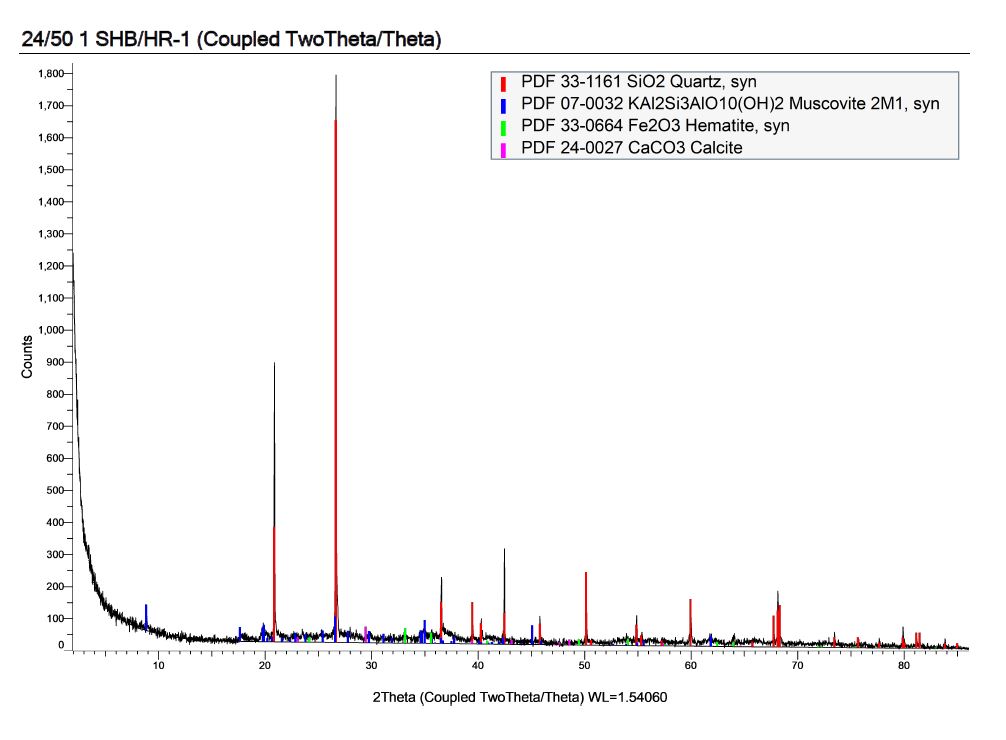
Figure 3: Details of the XRD scan and the ‘fits’ that the automated software generated (quartz, muscovite, and calcite as well as hematite). The fact that the quartz and muscovite peaks are larger than the hematite ones does not mean they are more abundant, just that they are more crystalline and so give stronger peaks (Professor Simon Bottrell, personal communication).
The XRD analysis indicates that the principal Fe mineral is hematite. Quartz is probably detrital, possibly providing the nucleus grain for the spherule, whereas the calcite, which is consistent with the carbonate content revealed by the above analysis (Table 1), could either be detrital or an authigenic precipitate. The muscovite is probably detrital mica that was incorporated as the spherule grew. Assignment of the mica as muscovite is a generalization and the material present could lie within the range of compositional range illite-muscovite (Professor Simon Bottrell, personal communication).
From the analytical results presented above, it is clear that the spherules exhibit elevated mineral/trace-element levels, especially Fe and Mn, as might be expected when compared to the background sediment samples, and due to the enriched mineral precipitation that occurs around a particulate core.
Comments
- Much of the cave passage found in Hallowe’en Rift has been formed along mineral veins and throughout the cave there is evidence of hydrothermal activity. Scallops in the deeper sections of cave are indicative of upwelling fluids.
- There are thick deposits of calcite throughout the cave, and the flowstones and other speleothems probably derive from supersaturated fluids. Supersaturation might be a consequence of the of cave passages at shallow depth being subject to more ‘aggressive’ surface waters that leached carbonate minerals from the host rock.
- Further samples taken from a section of cave beyond Trick or Treat also contained abundant ferro-manganese spherules confirming the wider distribution of spherules throughout the cave. They are especially common in ‘grey’ bands within rhythmite sediments. Scope remains to study sediments in the wider catchment area, to investigate whether the distribution of Fe/Mn spherules is more widespread.
- In future it is hoped that suitable speleothem sample(s) might provide U-series dating results and so contribute to establishment of a time-frame for sediment deposition.
It is acknowledged that the research to date is limited with regard to the number and scope of analyses conducted; therefore, a detailed interpretation is not presented at this stage. Hopes are that this can be addressed in the future by more sampling and analyses, leading to an increase in the quantity and value of the information available.
Acknowledgements
Special thanks to Professor Simon Bottrell and Lesley Neve, at the School of Earth and Environment, University of Leeds for providing the XRD analysis and in doing so adding valuable information about the composition of the Fe/Mn spherules.
My thanks also the BCRA referees for their constructive and helpful comments, which helped to improve the clarity of this Report.
Without the commitment, determination, and camaraderie of a dedicated group of diggers, including (in alphabetical order) Paul Brock, Nick Hawkes, Graham Johnson, Mike Moxon, Jonathon Riley, and Robin Taviner, the discoveries made in Hallowe’en Rift would not have happened.
Reference sources consulted
Bull, P.A. 1980. Towards a reconstruction of timescales and palaeoenvironments from cave sediment studies. In Cullingford, R.A., Davidson, D.A. and Lewin, J. (1980) Timescales in Geomorphology. John Wiley & Sons Ltd.
Huang, L. 2022. Pedogenic ferromanganese nodules and their impacts on nutrient and heavy metal sequestration. Elsevier, Earth-Science Reviews 232 (2022) 104147 https://doi.org/10.1016/j.earscirev.2022.104147
Kalinina, N. A., Rudmin, M. A., Sherstyukov, M., Maximov, P., and Kerimov, A-G. 2024. Origin of iron-rich minerals ooids and pisoids in the Jurassic ooidal ironstones of the Labino-Malkin region (Caucasus). Journal of Palaeogeography, 2024, 13(3) : 475-494
Kearey, P. 2001. The New Penguin Dictionary of Geology, 2nd Edition. Penguin Books
Kotula Piotr, Andreychouk Viacheslav, Pawlyta Jacek, Marynowski Leszek, Jendrzejewska Izabela. (2019). Genesis of iron and manganese sediments in Zoloushka Cave (Ukraine/Moldova) as revealed by δ13C organic carbon. “International Journal of Speleology” (2019, iss. 3, s. 221-235). https://digitalcommons.usf.edu/ijs/vol48/iss3/1/
Simmonds, V. Evidence for Pleistocene frost and ice damage of speleothems in Hallowe’en Rift, Mendip Hills, Somerset, UK. Cave and Karst Science, Vol.46, No.2, (2019) 74-78. Transactions of the British Cave Research Association
White, W.B., “Cave Sediments and Palaeoclimate” (2007). KIP Articles. 784. https://digitalcommons.usf.edu/kip_articles/784

